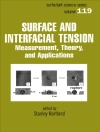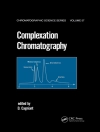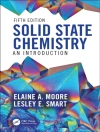“… the book does an excellent job of putting together several different classes of materials. Many common points emerge, and the book may facilitate the development of hybrids in which the qualities of the “parents” are enhanced.” –Angew. Chem. Int. Ed. 2011
With applications in optoelectronics and photonics, quantum information processing, nanotechnology and data storage, molecular materials enrich our daily lives in countless ways. These materials have properties that depend on their exact structure, the degree of order in the way the molecules are aligned and their crystalline nature. Small, delicate changes in molecular structure can totally alter the properties of the material in bulk.
There has been increasing emphasis on functional metal complexes that demonstrate a wide range of physical phenomena. Molecular Materials represents the diversity of the area, encapsulating magnetic, optical and electrical properties, with chapters on:
- Metal-Based Quadratic Nonlinear Optical Materials
- Physical Properties of Metallomesogens
- Molecular Magnetic Materials
- Molecular Inorganic Conductors and Superconductors
- Molecular Nanomagnets
Structured to include a clear introduction, a discussion of the basic concepts and up-to-date coverage of key aspects, each chapter provides a detailed review which conveys the excitement of work in that field.
Additional volumes in the Inorganic Materials Series:
Low-Dimensional Solids | Molecular Materials | Porous Materials | Energy Materials
Table of Content
Inorganic Materials Series Preface.
Preface.
List of Contributors.
1 Metal-Based Quadratic Nonlinear Optical Materials (Olivier Maury and Hubert Le Bozec).
1.1 Introduction.
1.2 Basic Concepts of Second-Order Nonlinear Optics.
1.2.1 Introduction to Nonlinear Molecular Materials.
1.2.2 Molecular Engineering of Quadratic NLO Chromophores.
1.2.3 Experimental Measurements of Second-Order NLO Activities.
1.3 Dipolar Metal Complexes.
1.3.1 Metal Complexes as Donor Groups.
1.3.2 Metal Complexes as Acceptor Groups.
1.3.3 Bimetallic Push–Pull Complexes.
1.3.4 Metal Complexes as p-Conjugated Bridges.
1.4 Octupolar Metal Complexes.
1.4.1 Metal as Peripheral Donor (or Acceptor) Substituent.
1.4.2 Metal as Template.
1.4.3 Conformational Studies Using Second-Order NLO Activity Measurements.
1.5 Switching Optical Nonlinearities of Metal Complexes.
1.5.1 Redox Switching of Quadratic Nonlinearities.
1.5.2 Acid/Base Switching of Quadratic Nonlinearities.
1.5.3 Photoswitching of Quadratic Nonlinearities.
1.6 Towards the Design of Pre-Organised Materials.
1.6.1 Supramolecular Octupolar Self-Ordering Within Metallodendrimers.
1.6.2 Engineering of NLO-Active Crystals.
1.7 Conclusions.
References.
2 Physical Properties of Metallomesogens (Koen Binnemans).
2.1 Introduction.
2.2 Overview of Mesophases.
2.3 Optical Properties.
2.3.1 Birefringence.
2.3.2 Light Absorption and Colour.
2.3.3 Luminescence.
2.3.4 Nonlinear Optical Properties.
2.4 Electrical Properties.
2.4.1 Electrical Conductivity.
2.4.2 Photoconductivity.
2.4.3 Electrochromism.
2.4.4 Ferroelectricity.
2.5 Magnetic Properties.
2.5.1 Magnetic Anisotropy and Alignment in External Magnetic Fields.
2.5.2 Spin-Crossover Phenomena.
2.5.3 Single Molecule Magnets.
2.6 Conclusions.
References.
3 Molecular Magnetic Materials (Neil Robertson and Gordon T. Yee).
3.1 Introduction.
3.1.1 History of Measurements.
3.2 Basic Concepts.
3.2.1 Magnetisation and Susceptibility.
3.2.2 The Curie and Curie–Weiss Laws.
3.2.3 Other Measurements.
3.2.4 Orbital Angular Momentum.
3.3 The Van Vleck Equation.
3.3.1 Application of the Van Vleck Formula to an Isolated, Spin-Only Metal Complex.
3.3.2 Deviations from the Curie Law: Zero-Field Splitting.
3.3.3 Exchange Coupling.
3.4 Dimensionality of Magnetic Systems.
3.4.1 Lattice Dimensionality vs Single Ion Anisotropy.
3.4.2 Mean or Molecular Field Approximation in Any Dimension and Any Value of S.
3.4.3 One-Dimensional Systems.
3.4.4 Two-Dimensional Magnetic Materials.
3.4.5 Three-Dimensional Magnetic Materials.
3.5 Switchable and Hybrid Systems and Future Perspectives.
3.5.1 Bistable and Switchable Magnetic Materials.
3.5.2 Multifunctional Magnetic Materials.
3.6 Conclusions.
References.
4 Molecular Inorganic Conductors and Superconductors (Lydie Valade and Hisashi Tanaka).
4.1 Introduction.
4.2 Families of Molecular Conductors and Superconductors.
4.2.1 From Molecules to Conductors and Superconductors.
4.2.2 Organic Metals and Superconductors.
4.2.3 Transition Metal Complex-Based Conducting Systems.
4.3 Systems Based on Metal Bis-Dithiolene Complexes.
4.3.1 Synthesis of Metal Bis-Dithiolene Complexes.
4.3.2 Synthesis of Conductors and Superconductors Based on Metal Bis-Dithiolene Complexes.
4.3.3 Superconductors Based on [M(dmit)2] Complexes.
4.3.4 Conductors Based on Neutral Metal Bis-Dithiolene Complexes.
4.4 Towards the Application of Molecular Inorganic Conductors and Superconductors.
4.4.1 Processing Methods.
4.4.2 Films and Nanowires of Molecular Inorganic Conductors.
4.5 Conclusions.
Acknowledgements.
References.
5 Molecular Nanomagnets (Richard E. P. Winpenny and Eric J. L. Mc Innes).
5.1 Introduction.
5.2 A Very Brief Introduction to Magnetochemistry.
5.3 Techniques.
5.3.1 Magnetometry.
5.3.2 AC Magnetometry.
5.3.3 Micro-SQUIDs.
5.3.4 Specific Heat.
5.3.5 Torque Magnetometry.
5.3.6 Electron Paramagnetic Resonance (EPR) Spectroscopy.
5.3.7 Inelastic Neutron Scattering (INS).
5.3.8 Nuclear Magnetic Resonance (NMR) Spectroscopy.
5.4 Single Molecule Magnets.
5.4.1 Physics of Single Molecule Magnets.
5.4.2 Chemistry of Single Molecule Magnets.
5.5 Emerging Trends.
5.5.1 Monometallic SMMs.
5.5.2 Molecular Spintronics.
5.5.3 Quantum Information Processing.
5.5.4 Antiferromagnetic (AF) Rings and Chains.
5.5.5 Magnetocaloric Effect.
5.5.6 High Symmetry Polyhedra and Spin Frustration.
5.5.7 Single Chain Magnets.
References.
Index.
About the author
Professor Duncan Bruce graduated from the University of Liverpool (UK), where he also gained his Ph D. In 1984, he took up a Temporary Lectureship in Inorganic Chemistry at the University of Sheffield and was awarded a Royal Society Warren Research Fellowship. He was then appointed Lecturer in Chemistry and was promoted Senior Lecturer in 1994, in which year he became co-director of the Sheffield Centre for Molecular Materials. In 1995, he was appointed Professor of Inorganic Chemistry at the University of Exeter. Following the closure of Exeter’s chemistry department in 2005, Professor Bruce took up his present position as Professor of Materials Chemistry in York. He is currently Chair of the Royal Society of Chemistry Materials Chemistry Forum. His current research interests include liquid crystals and nanoparticle-doped, nanostructured, mesoporous silicates. His work has been recognized by various awards including the British Liquid Crystal Society’s first Young Scientist prize and the RSC’s Sir Edward Frankland Fellowship and Corday-Morgan Medal and Prize. He has held visiting positions in Australia, France, Japan and Italy.
Dr. Richard Walton, who was also formerly based in the Department of Chemistry at the University of Exeter, now works in the Department of Chemistry at the University of Warwick. His research group works in the area of solid-state materials chemistry and has a number of projects focusing upon the synthesis, structural characterization and properties of inorganic materials.
Dermot O’Hare is Professor in the Chemistry Research Laboratory at the University of Oxford.
His research group has a wide range of research interests. They all involve synthetic chemistry ranging from organometallic chemistry to the synthesis of new microporous solids.
Duncan Bruce and Dermot O’Hare have edited several editions of Inorganic Materials published by John Wiley & Sons Ltd.












